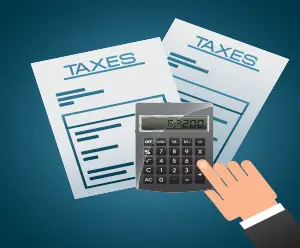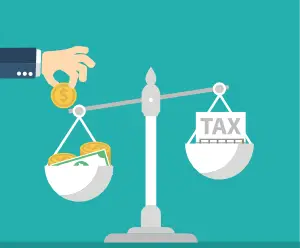
Understanding the IRS Substitute for Return
Click to ask Mike Ask Mike The Internal Revenue Service (IRS) Substitute for Return (SFR) is a term many taxpayers

Filing your tax return can be a daunting task, and it can become even more frustrating if your tax return gets rejected by the Internal Revenue Service (IRS). However, a rejected tax return is not the end of the world, and there are steps you can take to resolve the issue efficiently. In this article, we will guide you through the common reasons for tax return rejections and provide a comprehensive checklist on what to do when faced with this situation. By following these steps, you can ensure that your tax return is processed correctly and avoid unnecessary delays.
Review the Rejection Notice
The first step in dealing with a rejected tax return is to carefully review the rejection notice sent by the IRS. This notice will outline the specific reason(s) for the rejection. Common reasons for rejection include incorrect personal information, math errors, missing signatures, or discrepancies in reported income. Understanding the exact cause of the rejection is crucial, as it will help you take the appropriate corrective action.
Correct Errors and Resubmit
Once you have identified the reason for the rejection, you can start correcting the errors. If the rejection was due to inaccurate information or math errors, simply amend your tax return accordingly. Be sure to use the correct tax forms and double-check all the information provided. After making the necessary changes, you can resubmit your tax return. Most e-filing methods allow you to resubmit your return for free.
Consider Professional Help
If you are unsure how to address the issues that led to the rejection or if your tax situation is particularly complex, it may be beneficial to seek professional assistance. Enlisting the help of a certified tax professional or CPA can ensure that your tax return is prepared accurately and in compliance with IRS regulations. They can also provide guidance on the specific steps you need to take to resolve the rejection and prevent future issues.
Request an Extension if Needed
If you need additional time to correct the errors on your tax return, you can request an extension. Filing for an extension will give you more time to gather the necessary documentation and make the required corrections. However, it’s essential to remember that an extension to file your tax return does not grant an extension to pay any taxes owed. You may still be subject to interest and penalties if you owe taxes and don’t pay by the original deadline.
Be Prompt in Your Response
Time is of the essence when dealing with a rejected tax return. The IRS typically provides a deadline for correcting the issues and resubmitting your return. It’s crucial to adhere to this deadline to avoid further complications. If you fail to address the rejection promptly, it can lead to delayed processing and potential fines or penalties.
Monitor Your Tax Refund
After resubmitting your corrected tax return, keep a close eye on the status of your tax refund. You can use the IRS’s “Where’s My Refund?” tool to track the progress of your refund. If there are any additional issues or delays, this tool will provide you with updates and information on the status of your refund.
Dealing with a rejected tax return can be frustrating, but it’s essential to stay calm and follow the necessary steps to resolve the issue. By carefully reviewing the rejection notice, correcting errors, seeking professional assistance if needed, and responding promptly, you can ensure that your tax return is processed accurately and without unnecessary delays. Remember that timely action is key when it comes to addressing a rejected tax return, and with the right approach, you can navigate this situation successfully.
You can now ask our AI assistant any questions you have about your tax debt or any tax-related issues. Whether you’re unsure about payment plans, need clarification on penalties, or want information on how to resolve your tax situation. Our AI is ready to assist you with all your tax-related concerns.

By interacting with our AI assistance, you agree to our terms & conditions. Enjoy our AI Tax Assistant responsibly.
Ask me any questions...
Related Posts

Click to ask Mike Ask Mike The Internal Revenue Service (IRS) Substitute for Return (SFR) is a term many taxpayers

Click to ask Mike Ask Mike The Internal Revenue Service (IRS) Substitute for Return (SFR) is a term many taxpayers

Click to ask Mike Ask Mike The Internal Revenue Service typically operates within a 10-year window, commencing from the

Click to ask Mike Ask Mike The Internal Revenue Service (IRS) operates within specific timeframes dictated by statutes of limitations

Click to ask Mike Ask Mike understanding the ins and outs of the 10-year statute of limitations (SOL) is essential.
Recent Posts

Click to ask Mike Ask Mike The Internal Revenue Service (IRS) Substitute for Return (SFR) is a term many taxpayers

Click to ask Mike Ask Mike The Internal Revenue Service (IRS) Substitute for Return (SFR) is a term many taxpayers

Click to ask Mike Ask Mike The Internal Revenue Service typically operates within a 10-year window, commencing from the

Click to ask Mike Ask Mike The Internal Revenue Service (IRS) operates within specific timeframes dictated by statutes of limitations

Click to ask Mike Ask Mike understanding the ins and outs of the 10-year statute of limitations (SOL) is essential.
Disclaimer: This is educational content, not legal, accounting, or tax advice.
This is a tax debt resource website, not to be used in lieu of a tax attorney or for legal advice. All information, Ai chat responses, articles, materials, and content are intended to inform users on a variety of tax topics. In no way is it intended to be construed as accounting, legal, tax, other services or advice. This site is not intended to be used to avoid tax penalties or tax debt that may be imposed by law. Terms and Conditions. Your use of this site constitutes acceptance of the following terms and conditions.
This is a tax debt resource website, not to be used in lieu of a tax attorney or for legal advice. All information, Ai chat responses, articles, materials, and content are intended to inform users on a variety of tax topics. In no way is it intended to be construed as accounting, legal, tax, other services or advice. This site is not intended to be used to avoid tax penalties or tax debt that may be imposed by law. Terms and Conditions. Your use of this site constitutes acceptance of the following terms and conditions.
© 2023 · Tax Debt Monster, Inc. All rights reserved

For all Tax Professionals that would like to partner up with us. By partnering with us, you’ll help us connect and make a positive impact in the tax community. Partner up with us and receive a complimentary Ai Tax Sidekick to help support your clients at no cost! Click here if you’re interested in our Partner-Up program

By interacting with our AI assistance, you agree to our terms & conditions. Enjoy our AI Tax Assistant responsibly.
How may I help you with your tax issue?